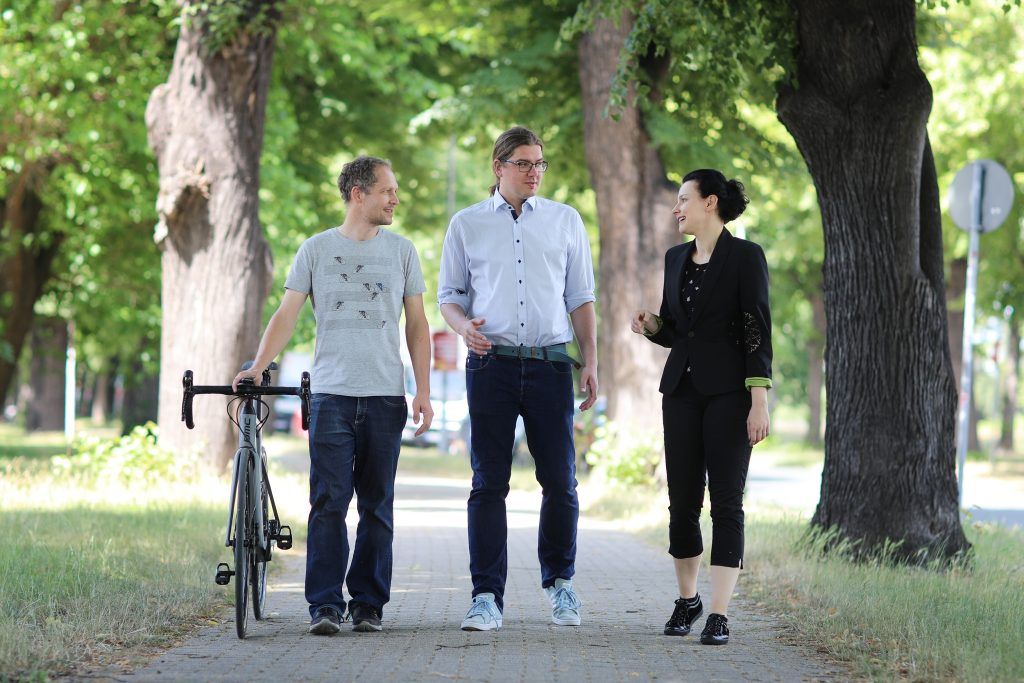The term “energy transition” refers to the gradual switch from fossil fuels and nuclear power to renewable energy sources for the supply of electricity and heat. The most important goal is to reduce greenhouse gas emissions in this way and thus counteract climate change, with consequences such as global warming, extreme weather conditions, rising sea levels, the flooding and drying out of entire regions and all the associated social and economic problems.
The energy transition not only affects the energy sector and the supply of electricity and heat, but also other sectors such as agriculture and the automotive industry.
NOVUM’s AI-based technology supports and facilitates the energy transition. On the one hand, it enables the extended use and reuse of batteries, in a second, third and sometimes even fourth life through rapid battery testing. It also creates the conditions for the safe and maximally profitable operation of battery storage systems with new or used batteries through AI-based monitoring.

Central building blocks of the energy transition
Germany is one of the pioneers of the energy transition in Europe and worldwide. According to the German government, around 80 percent of electricity consumption is to come from renewable energies by 2030. Whether this will be achieved is still questionable at present, as there is a lack of the necessary infrastructure and technical solutions to store energy for longer periods, e.g. from summer to winter. Beyond such concrete goals, a large number of measures are helping to make our electricity and heat supply more sustainable, climate-friendly and efficient. The most important building blocks include the following points:
- Renewable energies: The increased use of renewable energy sources such as wind, sun, water and biomass plays a crucial role in the energy transition. These include wind farms and solar energy plants as well as the use of geothermal energy and hydropower. As electricity generation from renewable energies fluctuates just as much as demand, battery storage systems are indispensable. They store energy during periods of high generation and release it again during periods of low generation.
- Energy efficiency: Greenhouse gas emissions can also be reduced by using less electricity with the help of modern technologies. This applies, for example, to increasing energy efficiency in buildings, industry and transportation. Here too, NOVUM’s technology is of crucial importance. It makes it possible to collect important battery data quickly and cost-effectively, which can help to build more compact chemical energy systems and use them for longer.
- Electrification: The electrification of transportation and heating through the use of electromobility and heat pumps helps to reduce the consumption of fossil fuels. NOVUM technology ensures the safe and efficient operation of the corresponding e‑fleets and battery storage systems.
- Grid infrastructure: The production of energy from sun, wind and water fluctuates naturally. The same applies to energy demand. The expansion of the corresponding infrastructure, including battery storage, is therefore absolutely essential in order to transport and distribute renewable energy efficiently.
- Phasing out fossil fuels: With the increasing production of sustainable energy, we are no longer reliant on coal, oil, natural gas and nuclear power. The phase-out is a decisive step towards reducing greenhouse gas emissions.
- Stabilization and flexibility through storage: The development of energy storage technologies, such as battery storage and hydrogen storage, are crucial to compensate for fluctuations in electricity generation from renewable sources. Battery storage systems are particularly suitable for short-term storage. They help companies, for example, to flexibly cover their own requirements and can also serve as a grid buffer. There are currently no satisfactory solutions for long-term storage, e.g. from the summer months into the winter. However, research is currently being carried out across the board.
- Political framework conditions: The creation of a political and legal framework, including financial incentives and support programs, is crucial for the energy transition to succeed. The energy transition in Germany is based on the following laws and strategy papers, among others: Energy Industry Act (EnWG), Renewable Energy Sources Act (EEG), Climate Protection Program 2030, Federal Government Energy Concept, Climate Protection Act and European Green Deal.
- Citizen participation and acceptance: Involving the population and promoting citizen projects in the field of renewable energies are important elements in increasing acceptance of the energy transition. The exchange on new technology, such as artificial intelligence, is an important part of this.
- Research and innovation: Investment in research and development is crucial in order to further improve the efficiency and cost-effectiveness of renewable energies. NOVUM conducts its own research and is also involved in research collaborations with companies and various universities and research institutes.

Tasks of battery storage systems in the use of renewable energies
Battery storage systems are a key building block for the energy transition. They perform a number of tasks that help to ensure that the power supply is secured, even if the same amount of electricity cannot be produced and used at all times.
Electricity storage from renewable energies
Renewable energies such as wind and solar are intermittent, which means that how much can be produced depends on the weather. The greater the share of renewable energies in the total electricity supply, the more certain seasonal or weather-related fluctuations must be taken into account. Battery storage ensures that these fluctuations are balanced out. They can absorb and release energy in milliseconds. In order for 80 percent of Germany’s electricity consumption to actually be covered by renewable energies by 2030, according to the Federal Government’s plans, Germany will need around 100 gigawatt hours of storage capacity, according to estimates. In April 2023, the storage capacity was only 7 gigawatt hours.
Grid stability
Fluctuations in the grid frequency can occur not only when production and demand do not match, but also when problems arise suddenly, e.g.because a large power plant fails. Battery storage systems are able to compensate such fluctuations within a very short time. It is particularly beneficial when companies operate their own storage systems and thus increase their security of supply and autonomy. If the power goes out, they have no problem because they can fall back on their own.
Battery storage systems can help increase grid stability by responding to rapid changes in electricity demand. They can emit or absorb energy within milliseconds to compensate for grid fluctuations and keep the grid in a stable state.
Peak load balancing
Peak loads occur when the demand for electricity within a country, a specific region or even within a company is particularly high for a short time. Predictable peak loads occur e.g. B. always at certain times of the day. For example, when people come home in the evening, cook or turn on the TV. There are unpredictable peak loads, for example:due to extreme weather conditions, for example when many people switch on their air conditioners at the same time when it is hot. In companies, there may also be certain production-related peak times in which a particularly large amount of electricity is consumed – e.g. in bakeries when baking in the morning. Electricity is sometimes particularly expensive at these times. Battery storage systems are a good solution for purchasing and storing low-cost electricity during lower load periods – and then using it during peak hours. Companies can save additional money by operating their own solar or wind power system.
Decentralized energy supply
Renewable energies offer the great possibility that electricity can be generated decentrally in many different places — but especially where it is needed, e.g. with a solar system on the roof of your own home or company. This eliminates expensive and wasteful transport and increases energy efficiency. Battery storage enhances this effect by storing excess energy on site, balancing production and demand. This means an increase in security of supply, energy efficiency and independence from central power generation systems.
Charging electric vehicles
Battery storage can be used wonderfully to charge electric vehicles with self-produced electricity. The charging process is currently even more of a challenge, especially for larger fleets where all vehicles have to be charged at the same time (e.g. delivery vehicles). On the one hand, because the electricity purchased is particularly expensive at peak times and, on the other hand, because the grid connection often cannot keep up with the increasing electricity demand. Often it is not possible to charge all vehicles at the same time because there simply cannot be enough electricity taken from the grid because there is simply not enough available. To ensure that fleet companies can still operate unhindered, battery storage is often used in addition to a good energy management system that schedules charging times as flexibly as possible. They buffer the high power requirements during peak hours and not only save high electricity costs, but also enable many companies to convert to larger electric vehicle fleets. The positive effect can also be expanded to include more self-sufficiency and greater savings if the battery storage system does not draw electricity exclusively from the power grid, but rather from its own renewable energy generation systems. Energy efficiency Energy produced can be used better through battery storage.
Energy efficiency
Produced energy can be used better through battery storage. Currently it still happens that e.g. wind turbines are switched off because more electricity is produced at certain points than can be used — or stored. In the worst case, producers even have to pay customers for their electricity instead of receiving money themselves. It is therefore particularly important that the infrastructure away from the production facilities is further expanded, including a sufficient number of battery storage units that can absorb energy that is not currently needed.
Avoid network expansion
Battery storage can also help reduce expensive investments in expanding power grids. They ensure that energy can be stored and used where it is produced. In some areas that are difficult to access or structurally complex, such as remote villages or fully built city centers, it can be significantly cheaper to cover the increased electricity demand with battery storage instead of laying larger power cables in remote areas or tearing up entire streets including buildings. Electricity storage can be a good solution here to store energy wherever it is generated or to release electricity stored throughout the day when a particularly large amount is needed.




